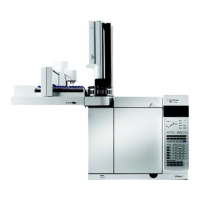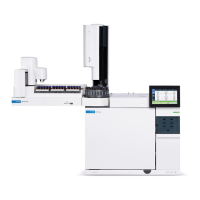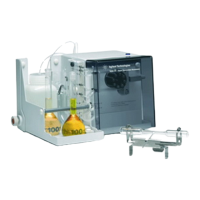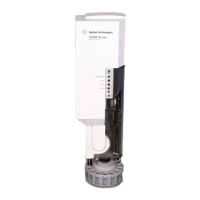Detectors 5
Advanced User Guide 101
1 Press [Front det] or [Back det].
2 Set the detector temperature. Scroll to Temperature and input
the desired value, and press [Enter]. It must be greater than
120 °C for the flame to light.
3 Scroll to H2 flow and change the hydrogen flow rate, if
desired. Press [Enter]. If the flame is not lit, press [Off/No] to
turn off the flow. (It is not good practice to pass
uncombusted hydrogen into the air. The hydrogen flow will
be turned on automatically when igniting the flame.)
4 Scroll to Air flow and change the air flow rate, if desired.
Press [Off/No] to turn off the flow for now.
5 If you are using packed columns, turn off the makeup gas
and proceed to step 9.
6 If you are using capillary columns, scroll to the Makeup
parameter:
a Verify that makeup gas type is the same as that plumbed
to your instrument. The configured gas type is shown next
to Makeup in the parameter list. Change the gas type, if
necessary.
b If your capillary column is defined, choose a flow mode
and set the makeup gas flow or combined flow.
c If your capillary column is not defined, enter a makeup
gas flow. Only constant flow is available.
7 Scroll to PMT voltage and make sure it is turned on.
8 Optionally, set the emission block temperature. (Normally,
the default temperature of 150 °C is sufficient for most
applications.) Scroll to Emission Block, input the desired
temperature, and press [Enter]. See “FPD
+
temperature
considerations” on page 98 for more information.
9 Scroll to Flame and press [On/Yes]. This starts the automatic
ignition sequence (see “Lighting the FPD
+
flame” on
page 99).
On successful ignition, the signal increases. Typical signal
output increases are 4 to 40 pA in sulfur mode, and 10 to
70 pA in phosphorus mode. You can also verify that the
flame is lit by holding a cold, shiny surface, such as a mirror
or chrome-plated wrench, over the vent exit. Steady
condensation indicates that the flame is lit.

